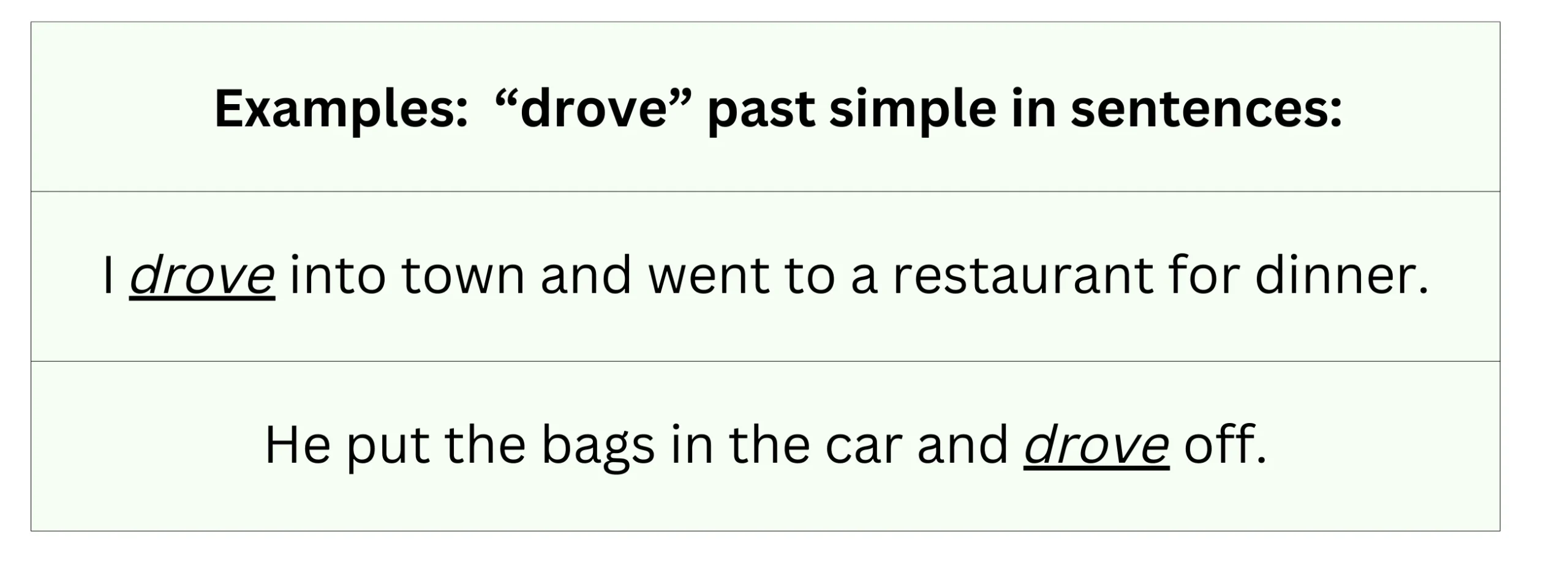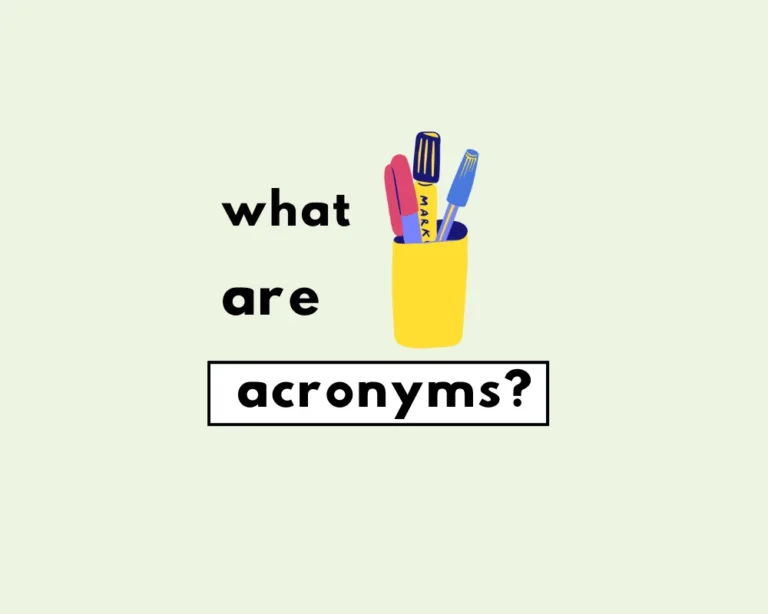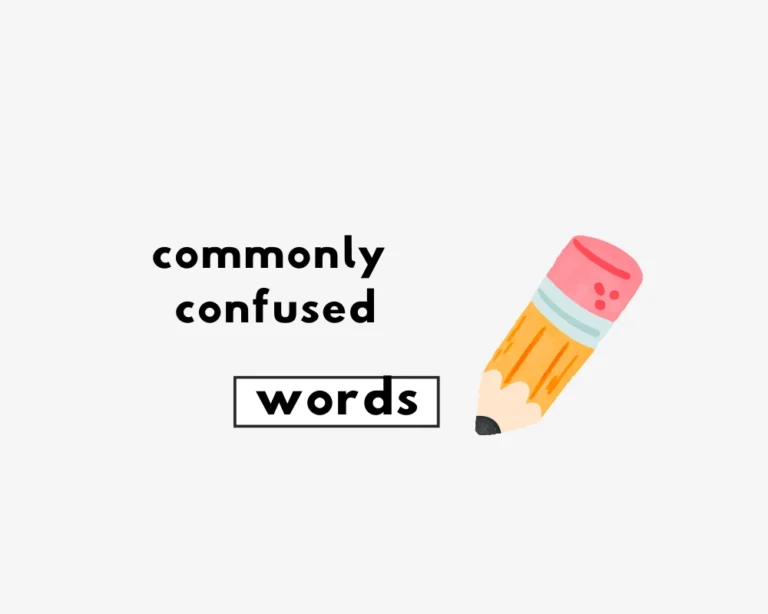
What’s the past tense of “drive”?
Both drove and driven are past verb forms of the present tense verb, drive. This makes drive another one of those irregular (read: awkward) verbs with multiple past tense forms, like ate and eaten, or bit/bitten. When it comes to these irregular verb conjugations, there isn’t really a rhyme or reason, we just have to memorize them.
She drove to the grocery store yesterday.
They have driven across the country many times.
I driven to work this morning.
He had drove that car before.

Verb forms of ‘drive’
The verb drive refers to when someone “operates a car or other vehicle and controls its movement and direction.” The simple past tense form of drive, i.e., drove, shares the same spelling and pronunciation as the collective noun drove, which are “a herd of livestock (or a drove of cattle/livestock)”. For example, “We hurried the drove of cattle into the barn”. This is not the same sense in which we’re using the verb drove in this article (for your information).
| present | past | future | |
| simple | I drive | I drove | I will drive |
| continuous | I am driving | I was driving | I will be driving |
| perfect | I have driven | I had driven | I will have driven |
| perfect continuous | I have been driving | I had been driving | I will have been driving |
When to use drove vs. driven
What’s the difference between the simple past tense drove, and the past participle verb form, driven? When is it correct to use drove over driven, and vice versa? Let’s have a closer look:
My mother drove us to the airport. (past tense)
Some of the people had driven a long way to attend the event. (past perfect tense)
Both sentences mention something that began and ended entirely in the past. Still, the simple past tense differs from the past perfect tense (also called pluperfect), and depicts past actions in a slightly different manner.
The past perfect aspect describes when one past action was completed before another past action, and clarifies the order that they took place. We form the past perfect tense by using the past participle form of the verb + auxiliary verb, had. The past simple doesn’t use auxiliaries or helper verbs, and is ‘simpler’ to use in this way.
Is “drive” a regular or irregular verb?
Drive is an irregular verb because its past forms do not use -ed. See the chart of other irregular verbs in the same class:
| base verb | past tense | past participle |
| drive | drove | driven |
| fly | flew | flown |
| blow | blew | blown |
| draw | drew | drawn |
| eat | ate | eaten |
| drink | drank | drunk |
”Drive” in the present tense (in sentences)
Don’t drive so fast!
Shall we drive or go by train?
It’s a two-hour drive to the beach.
What car do you drive?
You need a special licence to drive a heavy goods vehicle.
Create flashcards with the present tense (“drive”), simple past tense (“drove”), and past participle (“driven”). Use example sentences for each form to aid memorization.
“Drove” in the past tense, in sentences
My mother drove us to the airport.
A car drove up to us and a man got out.
3. I drove to work this morning.
The urge to survive is what drove them on.
A stream of black cars drove by.
Examples of the past participle “driven”, in sentences
Some of the people had driven a long way to attend.
The enemy was driven back.
The dairy products market will also be driven by consumer demand.
The work is driven by the need for information sharing.
They were driven to an unknown place in the hills.
Worksheet: verb forms, ‘drive’
| Select the correct tense for the sentences. | Answer options: |
|---|---|
| 1. Don’t drive so fast! | a. simple past b. simple present c. simple future d. future perfect continuous |
| 2. He drives a Toyota. | a. simple past b. simple present c. simple future d. future perfect continuous |
| 3. Driving and texting at the same time is now illegal in most countries. | a. past perfect b. present perfect c. present continuous d. future perfect continuous |
| 4. A car drove up to us and a man got out. | a. simple past b. simple present c. simple future d. future perfect continuous |
| 5. I ___ you to your appointment tomorrow. | a. drove b. driven c. will drive d. driving |
| 6. They were ___ to an unknown place in the hills. | a. drive b. driving c. drives d. driven |
Answers
- b
- b
- c
- a
- c
- d
Synonyms of drive
- operate
- control
- navigate
- pilot
- maneuver
- direct
- steer
- propel
- motor
- travel
- ride
- guide
- push
- accelerate
- move
Origin of the verb “drive”
From etymology online on drive (v.):
Old English drifan “to compel or urge to move, impel in some direction or manner; to hunt (deer), pursue; to rush against” from Proto-Germanic *dreibanan.
Learn more about verbs
| Types of verbs & verb tenses | what’s the past tense of …? |
|---|---|
| forms of ‘to be’ | … seek? |
| auxiliary verbs | … teach? |
| present tense | … catch? |
| future tense | … buy? |
| past tense | … read? |
| perfect tense | … ring? |
| transitive vs. intransitive | … draw? |
| participles | … throw? |
| irregular verbs | … lead? |
| modals | … win? |
Work Sheet
Which sentence correctly uses the simple past tense of the verb “drive”?
Which form of “drive” is the past participle, used with auxiliary verbs like “have” or “had”?
In the sentence “They have driven across the country many times,” which verb form is used?
According to the post, which sentence demonstrates a common error when using “driven”?
Why is “drive” considered an irregular verb?
Yesterday, I home from work early.
She had never a stick shift before.
The delivery truck was by a new driver.
Before relocating, they had that same route many times.
He his new car to the mountains last weekend.
Frequently Asked Questions
What are the past forms of ‘drive’?
+
When is “drove” used?
+
When is “driven” used?
+
Can I use “driven” alone?
+
Is “drive” a regular verb?
+
Yash, D. "What’s the Past Tense of Drive? Drove or Driven?." Grammarflex, Jun 3, 2025, https://www.grammarflex.com/whats-the-past-tense-of-drive-drive-drove-or-driven/.
Sources
-
Merriam-Webster, Definition of drive.










